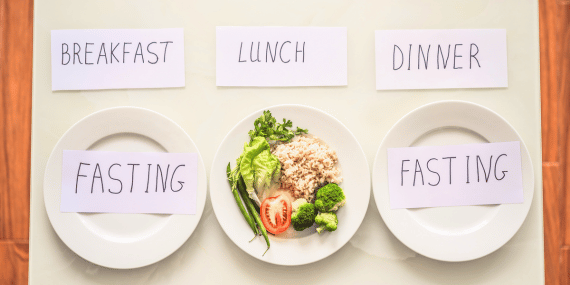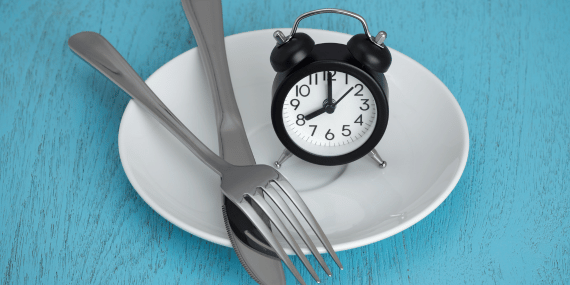
Getting the best results from intermittent fasting over the age of 50 can be a challenge, but it doesn’t have to be!
Story: Meet Jane. She is 58 and recently started intermittent fasting to improve her health and lose some weight. She was initially excited about restricting her eating window and giving her body a break from constant digestion.
However, Jane hasn’t seen the results she was hoping for after a few weeks of trying and feels stuck, confused, and overwhelmed. She’s not sure if she’s doing it correctly and needs some strategies to get better results. Despite her frustrations, Jane is determined to continue intermittent fasting and seeks guidance to help her achieve her goals.
8 Ways To Get The Best Results From Intermittent Fasting Over 50
Getting the best results from intermittent fasting over the age of 50 may offer several potential benefits, including:
- Weight loss: As we age, our metabolism tends to slow down, making it more difficult to lose weight. Intermittent fasting has been shown to help promote weight loss, especially when combined with regular exercise and a healthy diet.
Intermittent fasting can be an effective tool for weight loss: A review of 40 studies found that intermittent fasting can lead to an average weight loss of 7-11 pounds over 10 weeks. (Source:https://www.hsph.harvard.edu )
- Improved insulin sensitivity: Intermittent fasting has been shown to improve insulin sensitivity, which is important for maintaining healthy blood sugar levels and reducing the risk of developing type 2 diabetes.
Intermittent fasting may improve insulin sensitivity: A study found that intermittent fasting can improve insulin sensitivity and lower blood sugar levels in people with type 2 diabetes. (Source: https://pubmed.ncbi.nlm.nih.gov/26374764/)
- Reduced inflammation: Chronic inflammation is a risk factor for many chronic diseases, including heart disease, cancer, and Alzheimer’s. Intermittent fasting might help reduce inflammation in the body, which may help to reduce the risk of these diseases.
Intermittent fasting may reduce inflammation: A study found that intermittent fasting can reduce markers of inflammation in the body, which is associated with a lower risk of chronic diseases. (Source: https://www.ncbi.nlm.nih.gov/pmc/articles/PMC4257368/)
- Improved brain function: Some research suggests that intermittent fasting may help to improve brain function and reduce the risk of age-related cognitive decline.
It’s important to note that the benefits of intermittent fasting may vary depending on individual factors such as lifestyle, genetics, and overall health.

What Fasting Strategy is the Best For Women Over 50 and 60?
Here are a few intermittent fasting strategies that are popular:
- Time-Restricted Eating: This method involves eating within a specific time window each day, typically between 6-8 hours, and fasting for the remaining 16-18 hours.
- Alternate-Day Fasting: With this approach, you fast every other day, consuming only 500 calories on fasting days.
- 5:2 Diet: In this method, you eat normally five days a week and consume only 500-600 calories on two non-consecutive days.
- 16:8 Method: This method involves fasting for 16 hours and eating within an 8-hour window daily.
- 24-Hour Fast: This approach involves fasting 24 hours.
- Extended Fasting: Extended fasting involves fasting for 48 hours or longer. It is typically done only occasionally, with medical supervision.
These are just a few of the most popular fasting strategies. The best approach depends on your personal goals, lifestyle, and health status. The resource below will help you identify who might not start intermittent fasting.
Resource: The Easy To Follow Intermittent Fasting Guide For Newbies

What’s Easy and What’s Hard When Fasting?
Intermittent fasting can be both easy and challenging, depending on individual preferences and circumstances.
What’s easy about intermittent fasting:
- Flexibility: Intermittent fasting can be tailored to fit individual schedules and preferences. There are several types of intermittent fasting schedules, so you can choose one that fits your lifestyle and goals.
- No calorie counting: Unlike other diet plans, intermittent fasting doesn’t require counting calories or restricting certain foods. Instead, it focuses on when you eat.
- Can be cost-effective: Intermittent fasting can be a cost-effective way to manage weight and improve health, as it doesn’t require any special foods or supplements.
- Improved energy: Some people report increased energy levels and mental clarity when they practice intermittent fasting, which can improve productivity and overall well-being.

What’s hard about intermittent fasting:
- Hunger: Some people may experience hunger or cravings during fasting periods, making it difficult to stick to the plan.
- Social challenges: Intermittent fasting may make it challenging to participate in social activities that revolve around food, such as going out to dinner with friends.
- Potential side effects: While many people can practice intermittent fasting without negative side effects, some people may experience headaches, fatigue, or other symptoms.
- Adjusting to a new routine: If you’re used to eating several times a day, adjusting to a new eating schedule can be challenging.
Overall, intermittent fasting can be an effective tool for weight management and improving overall health. While it may have some challenges, many people find that the benefits outweigh the difficulties and that the practice becomes easier to maintain with time and practice.
If you want to know more about the additional benefits of Intermittent Fasting, check out the post below.
Resource:Resource: 5 Amazing Ways Intermittent Fasting Helps In Midlife

8 Ways to Get the Best Results From Intermittent Fasting Over 50 and 60
- Start with a shorter fasting window: If you’re new to intermittent fasting, start with a shorter fasting period, such as 12 hours. This means you would eat all your meals within a 12-hour window and fast for the remaining 12 hours. As you become more comfortable with fasting, you can gradually increase the fasting period.
- Choose the right fasting method: Choose a fasting protocol that works for you: There are several different types of intermittent fasting protocols, such as time-restricted feeding, alternate-day fasting, and periodic fasting. Choose a protocol that fits your lifestyle and goals and that you can stick to in the long term.
- Drink plenty of water: Staying hydrated is important when fasting, so drink plenty of water throughout the day. You can also drink black coffee or tea, as they can help suppress hunger.
- Plan your meals: Plan your meals in advance to have healthy options available during your eating window. This can help you avoid making poor food choices when you’re hungry.
- Listen to your body: Intermittent fasting may not be suitable for everyone, so it’s important to listen to your body and stop fasting if you experience any negative side effects.
- Eat a nutrient-dense diet during your eating periods: When you are eating, focus on consuming whole, nutrient-dense foods that provide your body with the vitamins, minerals, and macronutrients it needs to function properly.
- Incorporate regular exercise: Regular exercise can help to enhance the benefits of intermittent fasting, such as improved insulin sensitivity and weight loss. Aim to incorporate both cardiovascular and strength training exercises into your routine.
- Get enough sleep: Getting enough sleep is important for overall health and can help support the benefits of intermittent fasting. Aim to get 7-9 hours of sleep per night and establish a regular sleep routine to help promote quality sleep.
Resource: How Intermittent Fasting Can Improve Your Sleep Quality

Remember, intermittent fasting is just one tool for achieving optimal health and wellness. Focusing on a balanced, healthy lifestyle that incorporates good nutrition, regular exercise, and adequate sleep is important to support your overall well-being.
Choose the Right Time: Pick a time of day that works for you and stick to it. This might mean skipping breakfast, eating your first meal at lunchtime, or stopping eating earlier in the evening to allow for a longer overnight fast.
Mix It Up: Try different types of intermittent fasting, such as alternate-day fasting or time-restricted eating, to keep things interesting and prevent boredom. Mixing up your exercise routine can also help you see better results. Check out the Pursue Your Spark Blueprint and learn how to combine Intermittent Fasting with Pilates exercises that help you burn fat and get lean and strong in only 8 weeks.

Pingback: 6 Common Intermittent Fasting Mistakes
Comments are closed.